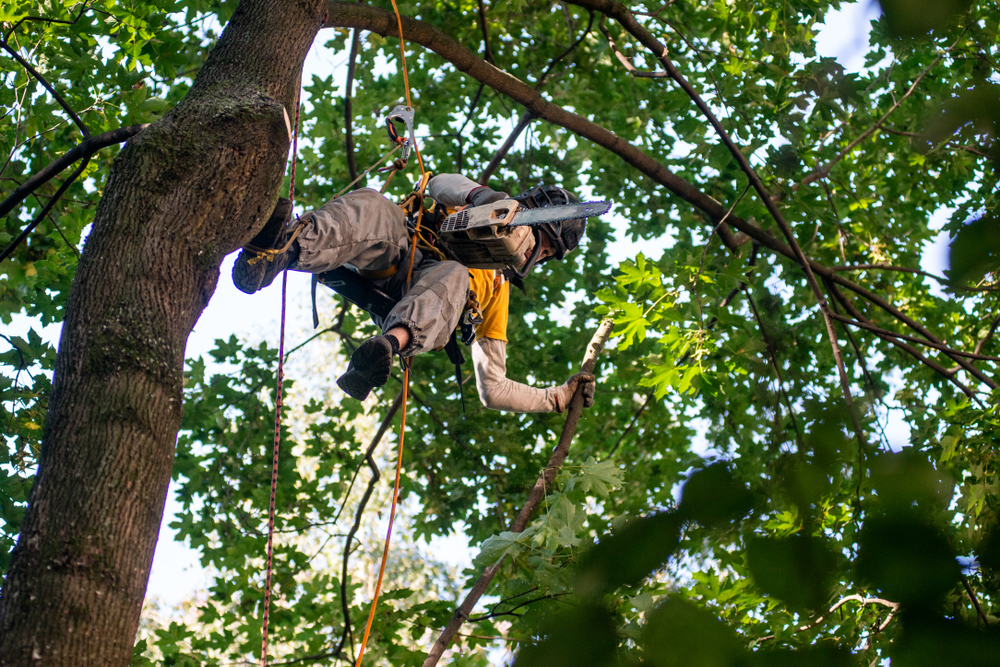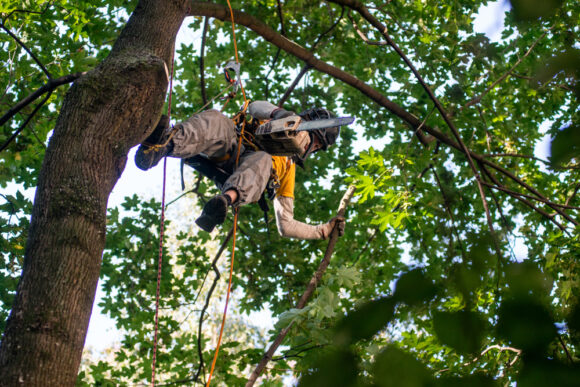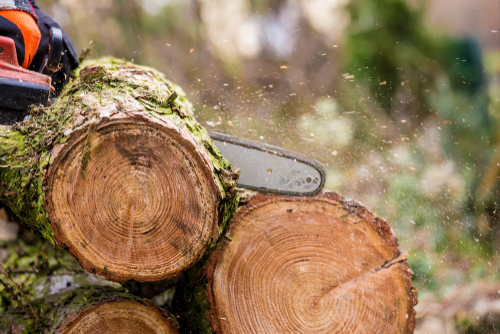How to Choose the Right Logging Equipment for your Needs
Selecting the appropriate logging equipment can be a daunting task, whether you’re an experienced forestry professional or a newcomer to timber operations. With the right tools, you can improve efficiency, safety, and productivity. This guide will walk you through the essential factors to consider when choosing the best logging equipment for your specific needs. If you’re in areas like Alamo, TN, looking for reliable outdoor power equipment or need to pair a riding lawn mower in Bells, TN, with your forestry tasks, this guide is for you.
Understanding Your Logging Requirements
Before investing in logging equipment, it’s vital to assess your specific needs. These considerations will serve as the foundation for your decision-making process.
Evaluate the Scope of Your Work
Are you managing a large-scale forestry operation or occasional tree felling on private land? The scale of your work determines the size and type of equipment you’ll need. Large operations might require skidders, forwarders, and harvesters, while smaller jobs may only require chainsaws and hand tools.
Consider the Terrain and Environment
The geographical conditions of your logging site influence your choice of machinery. Steep slopes, rocky ground, or dense forests might require specialized equipment. For example, tracked machines offer better traction in challenging terrain compared to wheeled options.
Think About Longevity and Durability
Investing in durable outdoor power equipment in Alamo, TN, ensures long-term usability. Look for brands and models with proven reliability under harsh forestry conditions.
Types of Logging Equipment
Logging equipment varies widely in functionality, and selecting the right tools depends on the tasks at hand. Here’s an overview of essential equipment categories.
Felling Equipment
Chainsaws
Chainsaws are the most versatile tools for felling trees and cutting logs. Modern chainsaws come with ergonomic designs, making them easier to handle for extended periods. Choose a model with appropriate power output for the size of trees you’ll be cutting.
Feller Bunchers
For large-scale logging, feller bunchers can cut and gather multiple trees simultaneously. These machines reduce labor costs and enhance efficiency.
Extraction Equipment
Skidders
Skidders are ideal for pulling logs from the forest to a central location. You can choose between cable skidders and grapple skidders, depending on your logging requirements.
Forwarders
Forwarders are another excellent choice for transporting logs, especially if you’re working in a site with challenging terrain. These machines carry logs completely off the ground, reducing environmental impact.
Processing Equipment
Delimbers
Delimbers remove branches from trees quickly, streamlining the processing stage. Portable delimbers are an excellent choice for smaller operations.
Wood Chippers
Wood chippers process branches and smaller logs into wood chips, which can be used as mulch or biomass fuel. Investing in a high-quality chipper ensures consistent performance.
Auxiliary Equipment
Logging Trailers
For transporting logs efficiently, logging trailers equipped with cranes can save time and effort.
Protective Gear
Safety should always be a priority. Equip yourself with helmets, gloves, chainsaw chaps, and steel-toed boots to minimize the risk of accidents.
Key Features to Look For
When purchasing logging equipment, prioritize features that align with your operational needs and safety standards.
Power and Performance
For heavy-duty tasks, opt for equipment with robust engines and high power output. Whether you’re operating a chainsaw or a riding lawn mower in Bells, TN, make sure the equipment can handle your workload efficiently.
Fuel Efficiency
With fluctuating fuel costs, choosing fuel-efficient machinery can save money in the long run. Many modern machines are designed to optimize fuel usage without compromising performance.
Ease of Maintenance
Logging equipment requires regular maintenance to perform at its best. Opt for models with easily accessible components, straightforward maintenance requirements, and a network of service providers near you.
Ergonomic Design
Forestry work can be physically demanding. Equipment with ergonomic handles, comfortable seating, and intuitive controls reduces operator fatigue and enhances productivity.
Trusted Brands for Logging Equipment
Choosing a reputable brand ensures reliability and access to after-sales support. In Alamo, TN, many outdoor power equipment providers stock trusted brands known for their durability and performance.
Stihl and Husqvarna
Stihl and Husqvarna are renowned for their high-quality chainsaws and other forestry tools. Their products are designed to withstand tough conditions and deliver consistent performance.
John Deere
For larger equipment like skidders and harvesters, John Deere offers reliable options with advanced features.
Caterpillar
Caterpillar’s logging equipment, such as forwarders and loaders, is known for its durability and innovation.
Budget Considerations
Logging equipment can be a significant investment, so it’s essential to balance cost with quality.
New vs. Used Equipment
Buying new equipment ensures reliability and often comes with warranties. However, used machinery can be a cost-effective alternative, provided it has been well-maintained.
Financing Options
Many dealers in Alamo, TN, and nearby areas offer financing plans for outdoor power equipment. Explore these options to spread the cost over time.
Long-Term Costs
Consider the long-term costs of ownership, including fuel, maintenance, and repairs. Investing in energy-efficient and durable equipment can reduce these expenses.
Finding the Right Dealer
Choosing a reliable dealer is as important as selecting the right equipment. Here are tips for finding a trusted provider in Alamo, TN, and surrounding areas.
Local Expertise
Look for dealers with a strong presence in your area. They’re more likely to understand the specific needs of local loggers and provide tailored recommendations.
Comprehensive Inventory
Dealers with a wide range of outdoor power equipment, from chainsaws to riding lawn mowers in Bells, TN, offer more choices and better availability of spare parts.
After-Sales Support
A dealer’s commitment to customer service is crucial. Choose a provider with excellent after-sales support, including maintenance services and readily available spare parts.
Safety and Environmental Considerations
Logging can pose risks to both operators and the environment. Taking proactive measures ensures safety and sustainability.
Operator Training
Proper training is essential for safely operating logging equipment. Many dealers and local organizations offer training programs to help you get started.
Adherence to Regulations
Ensure that your equipment complies with local forestry regulations and environmental standards. This includes emissions compliance and sustainable logging practices.
Minimizing Environmental Impact
Use equipment that minimizes soil disturbance and damage to surrounding vegetation. Forwarders and tracked machines are particularly effective in reducing environmental impact.
Maintaining Your Equipment
Proper maintenance extends the lifespan of your logging equipment and ensures reliable performance.
Regular Inspections
Inspect your machinery regularly for wear and tear. Pay special attention to moving parts and engine components.
Timely Repairs
Address issues promptly to prevent minor problems from escalating into costly repairs.
Seasonal Storage
When not in use, store your equipment in a dry, covered area to protect it from the elements. This is especially important for outdoor power equipment in Alamo, TN, where weather conditions can vary.
Conclusion
Choosing the right logging equipment involves careful consideration of your needs, budget, and local conditions. By investing in high-quality machinery and working with trusted dealers, you can ensure efficient and sustainable logging operations. Whether you’re managing large-scale forestry tasks or need a reliable riding lawn mower in Bells, TN, the right tools make all the difference. Visit your local outdoor power equipment provider in Alamo, TN, today to explore the best options for your logging needs.






